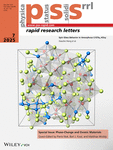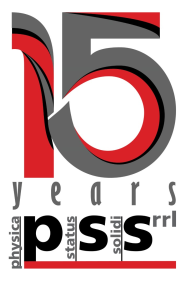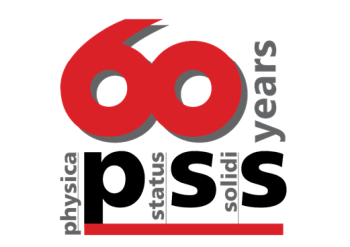Journal list menu
Export Citations
Download PDFs
Cover Picture
Spin Glass Behavior in Amorphous CrSiTe3 Alloy
- First Published: 06 July 2025
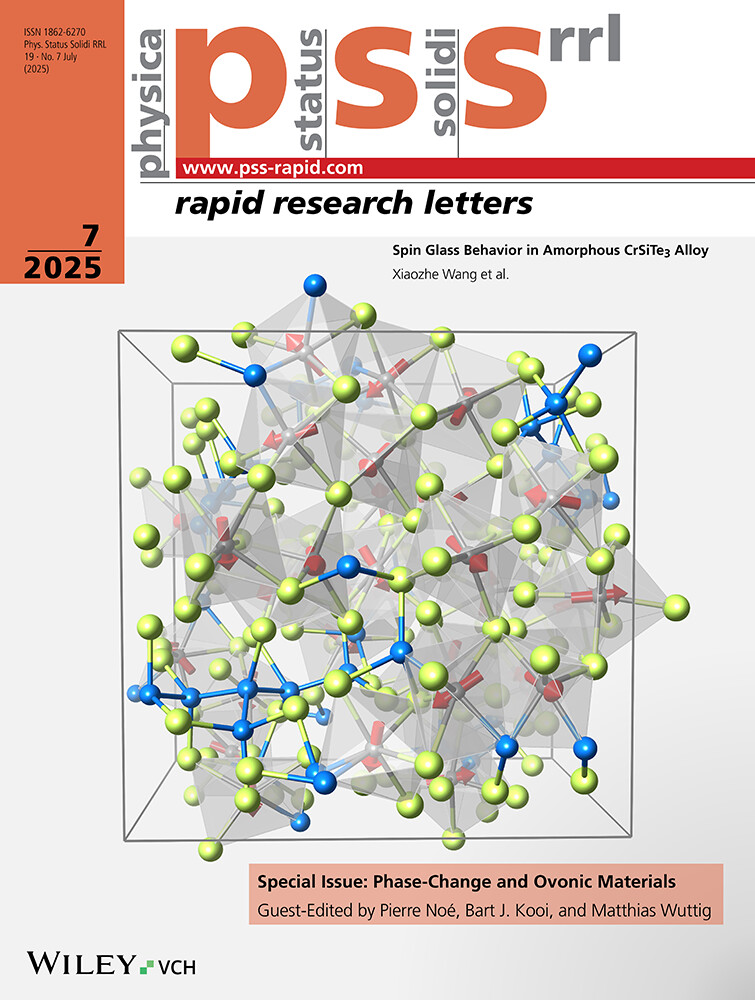
In article number 2500118, Suyang Sun, Jiangjing Wang, Wei Zhang, and co-workers reveal that amorphous CrSiTe3 exhibits a spin glass state via ab initio calculations and magnetic measurements, as indicated by the random magnetic of Cr atoms in distorted octahedra. Upon crystallization, CrSiTe3 undergoes a magnetic transition into a ferromagnetic state.
Issue Information
Guest Editorial
Review
Phase-Change Memory: A Historic Perspective
- First Published: 06 May 2025

The phase-change memory (PCM) technology is based on a chalcogenide material, able to make reversible transitions between a poly-crystalline, high conductivity phase, and an amorphous, high resistivity phase. The overview of the early work of Stanford Ovshinsky, the cell, and array demonstrators toward the more recent implementations of PCM prove the depth of the research done on this technology.
Research Article
Spin Glass Behavior in Amorphous CrSiTe3 Alloy
- First Published: 01 May 2025
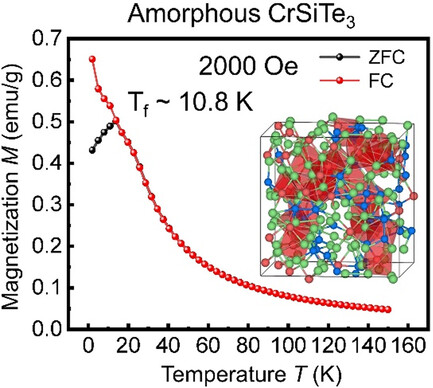
Herein, amorphous CrSiTe3 that has a small energy difference between the ferromagnetic and random magnetic configurations via ab initio simulations, which indicates a high probability of forming spin glass, is reported. The magnetic measurements confirm that amorphous CrSiTe3 to be a spin glass with a freezing temperature of ≈10.8 K under the external magnetic field with 2000 Oe.
Melting-Free Crystalline Polymorphic Transition in CrTe Thin Films: Potential for Phase-Change Random Access Memory Applications
- First Published: 03 April 2025

CrTe thin film exhibits a crystalline-to-crystalline polymorphic transition between hexagonal structure and monoclinic structure. Device utilizing CrTe as an active layer exhibits a typical threshold switching behavior. This is attributed to variations in contact resistivity in the device driven by changes in carrier concentration upon the crystalline polymorphic transition.
Ab Initio Investigation of Amorphous and Crystalline Arsenic Sesqui-Chalcogenides: Optical Properties Explained by Metavalent Bonding
- First Published: 26 November 2024

Rhombohedral As2Te3 shows well-aligned p-orbitals and large probability of inter-band transitions (lower inset), leading to a pronounced maximum in the dielectric function (upper inset). Conversion into a hypothetical monoclinic phase (the ground state of crystalline As2Se3) severely breaks the orbital alignment, resulting in a much lower optical response, as predicted by the bonding map.
Low-Temperature Atomic Layer Deposition of GeTe/Sb2Te3 Superlattice with High-Quality van der Waals Structure
- First Published: 02 February 2025
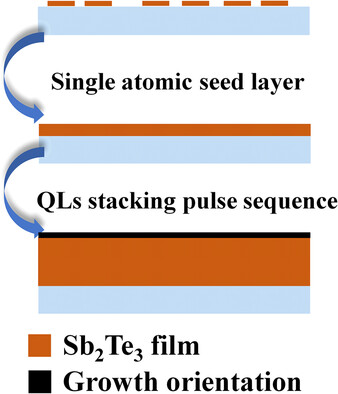
Herein, after sufficiently modifying the substrate surface with Sb precursors, a complete monolayer of Sb atoms can be formed. This ensures a rapid transition to ideal layered growth during deposition, promoting the formation of a uniform crystalline phase in the in-plane direction and preventing the formation of undesired vertical nanoparticle structures.
Probing Unconventional Glasses: Optical Insights into Ga–Ge–Te Alloys
- First Published: 19 March 2025
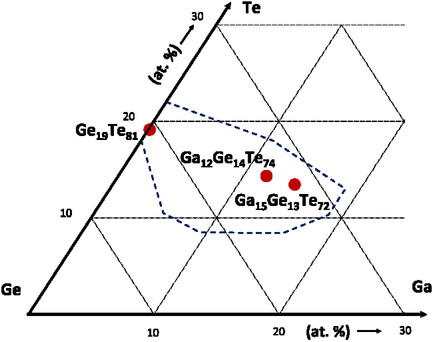
The optical properties of Ga–Ge–Te alloys are reported, highlighting their potential classification as unconventional glasses. The dielectric constant, optical bandgap, Urbach energy, and Tauc parameter are determined. The evolution of these parameters with Ga addition is interpreted in terms of the resulting increase in structural disorder within the Ga–Ge–Te alloys.
Modeling Filamentary Conduction in Reset Phase Change Memory Devices
- First Published: 02 March 2025

Local variations in activation energy lead to filamentary conduction in disordered materials such as amorphous Ge2Sb2Te5. As the voltage is increased, one of the filaments experiences thermal runaway and forms a short (≈2 nm diameter, current density (J) > 20 MA cm−2) between the two contacts, giving rise to the snapback (threshold switching) behavior in I–V characteristics observed in experiments.
Nitrogen-Doped GeSe1−xTex Chalcogenide Thin Films: A Candidate for On-Chip Low-Loss Reconfigurable Photonics and Nonlinear Device Applications
- First Published: 04 March 2025
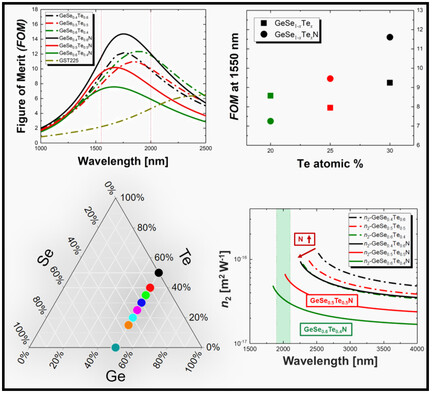
This study explores N-doped GeSe1−xTexN thin films for reconfigurable and nonlinear photonics. GeSe0.4Te0.6N excels in linear applications with high thermal stability (Tx ≈ 345 °C) and Δn > 1.9. For nonlinear applications, GeSe0.5Te0.5N and GeSe0.6Te0.4N outperform with negligible two-photon absorption losses and high n2 values around 2 μm. GeSe0.5Te0.5N emerges as a scalable, versatile material for both linear and nonlinear photonics.
Impact of Eccentricity on the Performance of Nanotube Phase-Change Memory Devices
- First Published: 21 February 2025

The impact of process-induced eccentricity on nanotube phase-change memory devices is investigated through 3D TCAD simulations. The configurations are common eccentric, confocal, and concentric. The nonideal devices show the quadratic dependence of RESET current (IRESET) on eccentricity. The common eccentric exhibits pronounced sensitivity, i.e., 83% increase in IRESET due to 80% increase in Ge2Sb2Te5/heater contact area when eccentricity is 0.83.
Polymorphic Phase-Change Properties and Memory Characteristics of VTe Thin Film
- First Published: 21 February 2025
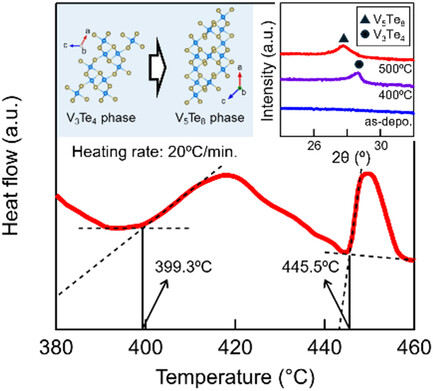
In this work, the feasibility of applying VTe binary system to phase-change random access memory that utilizes crystalline polymorphic phase-change is investigated. The VTe film exhibits a phase change from an amorphous phase to a stable V5Te8 phase via V3Te4 phase. The resistance changes during the phase changes are considerably smaller compared with other phase-change materials.
Phase-Change Heterostructures Based on Antimony
- First Published: 24 February 2025
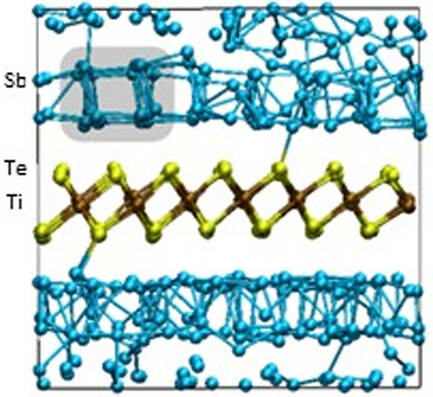
Switching cycle of a phase-change superlattice heterostructure consisting of alternating nanolayers of antimony and TiTe2 is simulated using ab initio and machine-learned molecular dynamics. It is shown that it is possible to switch the Sb layer without destroying the confinement layer. However, very high quenching rates must be employed to avoid partial recrystallization of antimony during the amorphization process.
Tuning Crystallization Pathways in Ge-Rich GST Alloys: The Influence of Nitrogen and Hydrogen
- First Published: 07 May 2025
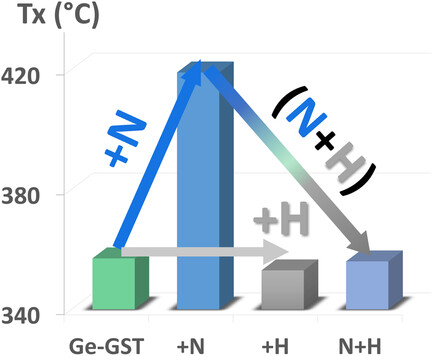
This study explores nitrogen and hydrogen doping effects on crystallization in Ge-rich GST alloys for phase-change memory. In situ characterizations reveal that nitrogen enhances thermal stability and increases crystallization temperature, while hydrogen lowers activation energy and alters nucleation. Co-doping suppresses nitrogen effects via NH interactions, introducing interface-driven crystallization and highlighting dopant synergy in tuning material behavior.
Editor's Choice
Partial Melting and Structural Disorder in Models of Irradiated Amorphous Ge2Sb2Te5
- First Published: 10 April 2025
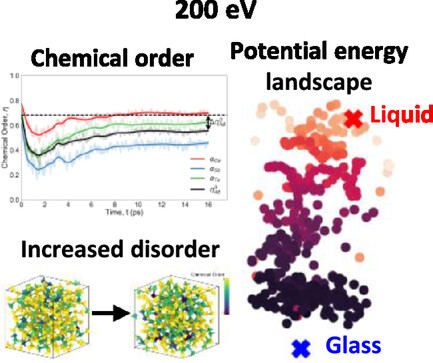
The evolution of the potential energy landscape of glassy during irradiation indicates the partial melting of the model structure. This view provides a thermodynamic insight into the fast recovery of the amorphous network after irradiation. The chemical disorder is enhanced within the healed glass structure. The primary knock-on atom simulations induce the formation of atomic environments with homopolar bonds.
Coherent Phonons in Epitaxial Thin Films of Phase-Change Material GeTe
- First Published: 14 May 2025
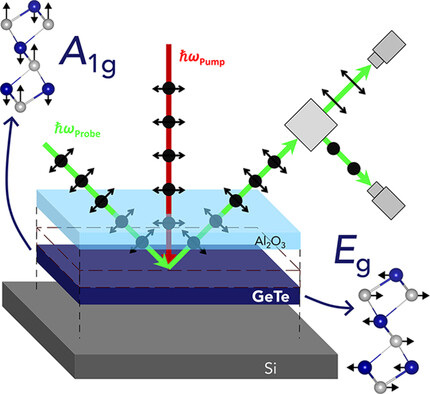
The present study investigates the dynamics of coherent phonons in thin GeTe films using a femtosecond reflection-type two-color pump-probe experiment. The study delves into the impact of film thickness, excitation fluence, and polarization on Raman-active modes, emphasizing the enhanced control over phonon behavior at nanoscale dimensions. These findings are intended to contribute to advancements in ultrafast optoelectronic applications.
Laser-Induced Crystallization and Amorphization of Ge-Rich GST Thin Films Monitored In Situ with Synchrotron X-Ray Diffraction
- First Published: 03 February 2025
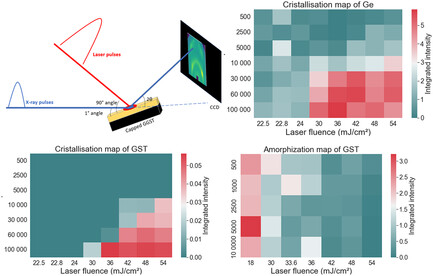
The article analyzes how Ge-rich GeSbTe thin films change when exposed to laser pulses.Ge-rich GeSbTe is a promising solution for memory applications involving phase transformation.The study explores how laser affects phase transformations in Ge-rich GeSbTe thin films, offering insights into laser-induced phase transitions in these materials.The phase transformations in Ge-rich GeSbTe show the potential for future research.




